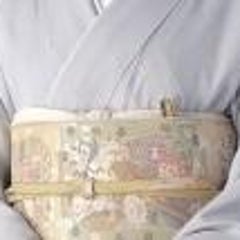日本語は英語の後に続きます。Japanese follows.
I had an auspicious Japanese “wagashi”
hexagonal sweet with turtle shell pattern (mon).
The turtle shell is a symbol of longevity and
auspicious omen, as there is an expression
“A crane lives 1,000 years and a turtle lives
10,000 years”. The turtle shell pattern is found in
the Shoso-in Treasure Repository and is one of
the auspicious omens motif that has been loved
for a long time.
The turtle shell pattern is also used in the crest of
Izumo Taisha Shrine. It is Izumo Taisha Shrine
that enshrines Okuninushi-no-Okami, and the
double turtle shell pattern is said to mean that
the divine virtue is spread widely in 6 directions
of heaven and earth in addition to the east, west,
north, and south. Izumo Taisha Shrine is located
to the north of Kyoto, and it is also said that turtle
shell pattern was used because Genbu, the
guardian god of the north, was in the shape of
turtle.
Since ancient times, the Japanese have
entrusted their wishes for eternal youth and
longevity to kimono and obi patterns. With that
in mind, I wore a turtle shell hanabishi pattern obi
that my aunt gave me.
Through the connection of “turtle (kame)” and
“pattern (mon)” (^^;), today’s “higashi” dry
sweet is made by Kameya Yoshinaga “mumon”.
Rakugan with a rich flavor of Daitokuji natto.
亀甲型に亀甲文様のおめでたい上生菓子
をいただいた。六角形の亀甲文様は
「鶴は千年、亀は万年」といわれ
長寿を象徴する吉祥の亀の甲羅の形に
由来する。亀甲文様は、正倉院宝物裂の
中にも見られ、古くから愛されている
吉祥文様のひとつだ。
亀甲は、出雲大社の神紋にも使われている。
大国主大神様をお祀りする出雲大社だが
二重亀甲紋は、そのご神徳を東西南北に
加えて天地の六方に広く行き渡らせる
という意味があるという。また京の都の北
にあり、北の守護神、四神の玄武が亀の姿
をしていることから、亀甲紋を用いた
とも言われている。
日本人は、古来、不老長寿などの願いを
着物や帯の文様に託してきた。改めて
そんなことを思いながら、伯母から譲り
受けた亀甲花菱文様の帯を纏った。
亀と「モン」つながりで(笑)
本日の干菓子は、亀屋吉永製「無門」
大徳寺納豆の香りが豊かな落雁。



